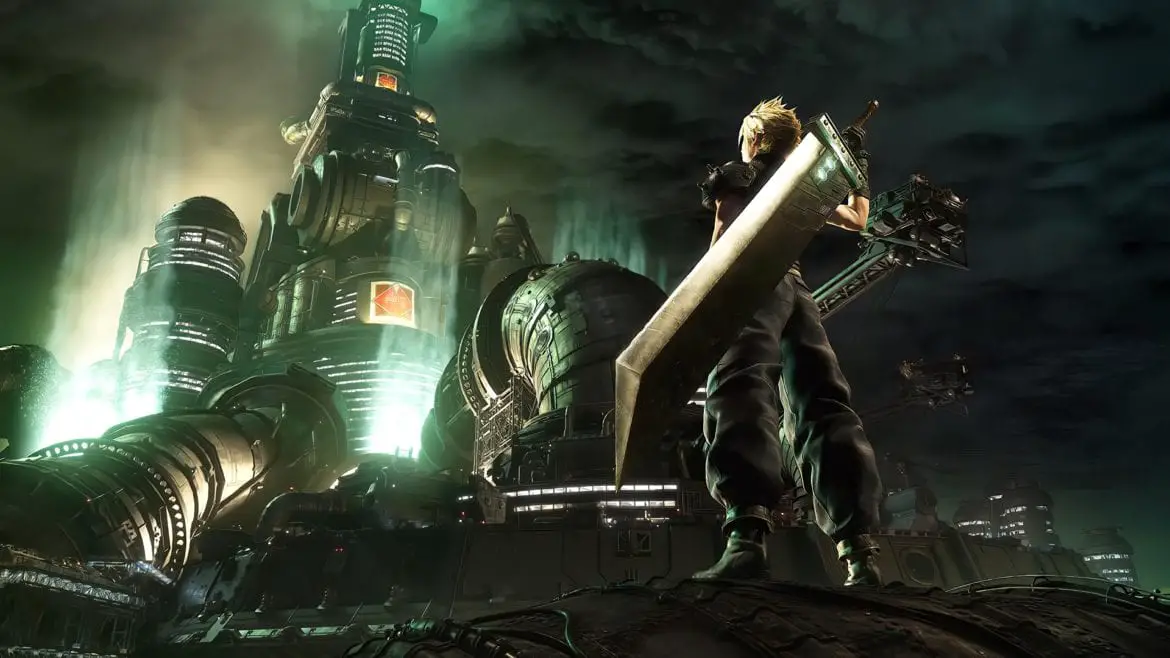A Classic Cyberpunk RPG Re-Imagined
Some games stand the test of time regardless of how long ago they were released. The original Super Mario Bros., the Legend of Zelda, Symphony of the Night and Metal Gear Solid; these are all games that people ardently discuss even 20 and 30 years later. And among them is the PlayStation classic which forever changed the JRPG landscape in 1997: Final Fantasy VII.
For what it’s worth, I never played Final Fantasy VII when it first came out; my gaming journey began just a tad too late. And even when I played it for a few hours on an emulator years later, it never quite clicked with me. It was too late and I blame the dated visuals. But whatever the reason, I don’t hold the original game in the same regard as many others do.
Ever since Capcom remade the original Resident Evil in 2002, however, they inadvertently presented gamers across the globe, my humble self included, with a series of questions. What if your favourite childhood game (even if it isn’t) could look and feel better? What if those memories you cherished so dearly would receive a modern makeover?
Fast-forward to 2020 and Final Fantasy VII Remake is finally here to answer these questions.
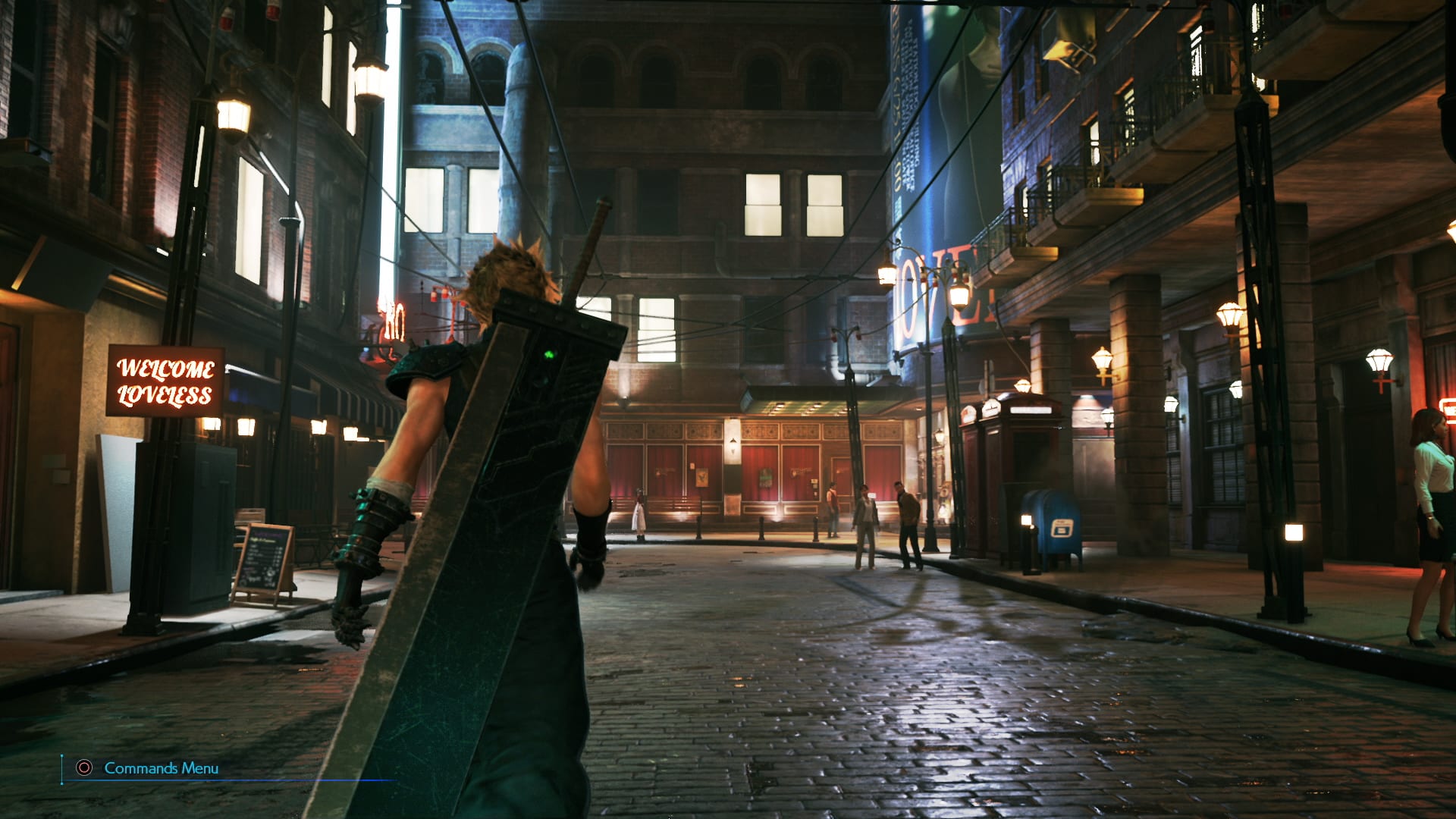
Final Fantasy 7 Remake: Midgar
Shinra, a powerful multinational conglomerate, holds the city of Midgar under its oppressive rule by having complete control over sources of power. By employing Mako reactors strategically built across the walled city, Shinra sucks the very life energy out of the earth and turns it into a profitable commodity: electricity. Despite that, most residents of the upper districts enjoy a relatively mundane existence; select few may go beyond and achieve a life of luxury.
Constant ID monitoring keeps the population in tow and prevents anyone from rising up against Shinra. However, a rebel group known as Avalanche is fighting this oppressive regime. Comprised of individuals from the Slums — the very bottom of society — the group makes it a priority to destroy all Mako reactors, thus intending to terminate Shinra’s monopoly. Final Fantasy VII Remake excels with a great story thanks to its excellent ensemble of characters.
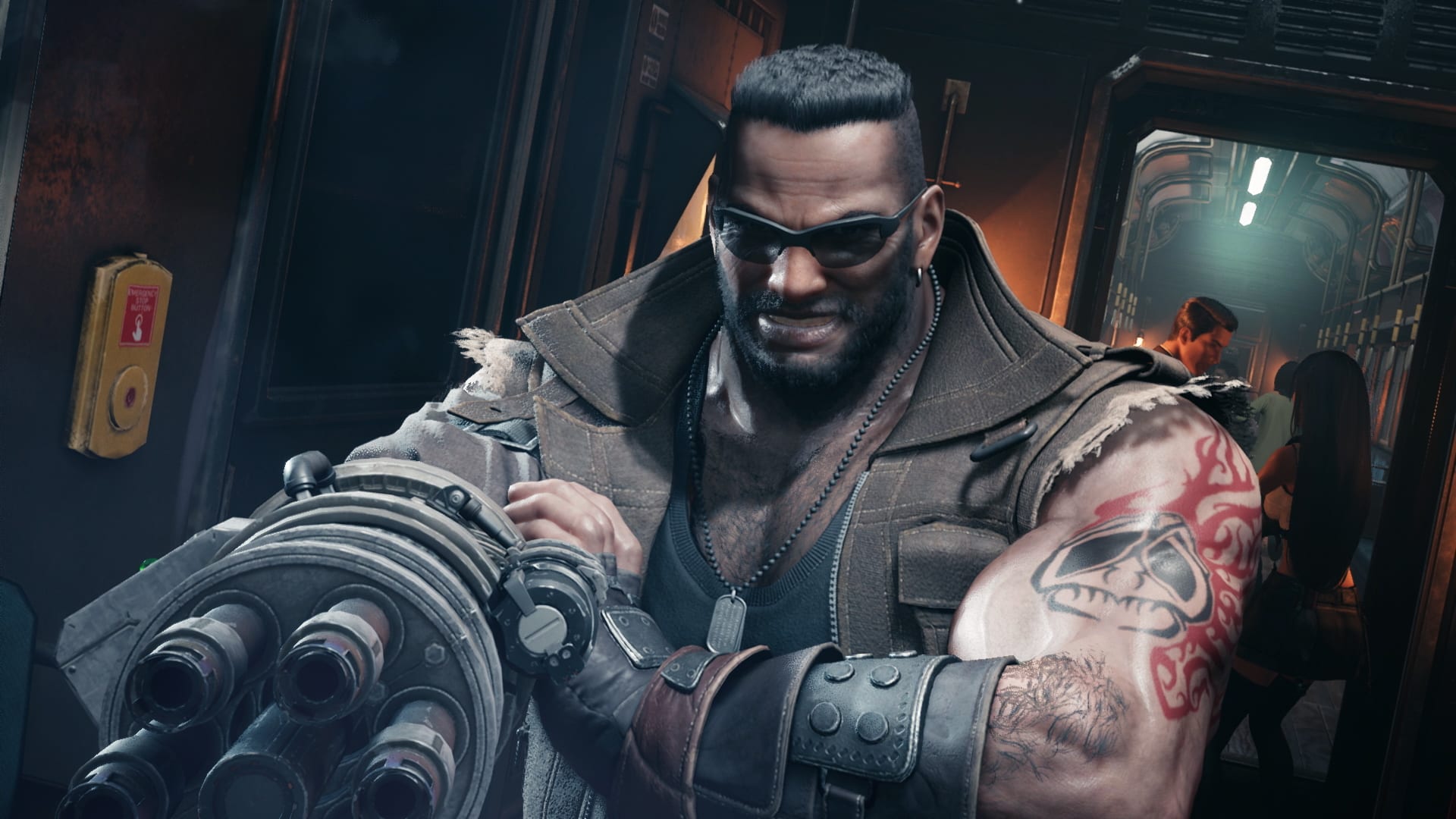
Avalanche is spearheaded by Barret Wallace, the de facto leader of the group. He’s a tall and buff dude with a minigun (once again, a MINIGUN) mounted on his right arm; you wouldn’t want to encounter him in a dark alley. He’s joined by the slender and busty Tifa Lockhart who runs a bar down in the Slums — “7th Heaven” — which is also the base of operations for the group. For their first gig, they hire a mercenary, the one you take control of — Cloud Strife.
Cloud is an emotionless ex Soldier: a group of elite warriors commissioned by Shinra. He’s not a likeable character at all; he doesn’t concern himself with the noble goals of Avalanche and his actions are motivated purely by the paycheck. He’s also one of those guys who needs constant reminding to be nice. The only person he somewhat cares for is Tifa and that comes down to them being childhood friends. But Barret and Cloud don’t see eye to eye initially.
Barret treats him more as a paid tool to accomplish his bottom line, but it soon turns out there’s a soft heart underneath that tough chest of his. And likewise, working with the group develops the better qualities in Cloud, making him into a more compassionate and relatable individual.
Even the less prominent members of Avalanche are a colourful bunch. Some of them, like Biggs and Wedge, fill supportive roles and don’t join the party in combat situations. That said, every character related to the cause brings something meaningful to the metaphorical table. Slowpoke Wedge provides a welcome comical relief: getting bit by a dog in the ass, for instance.
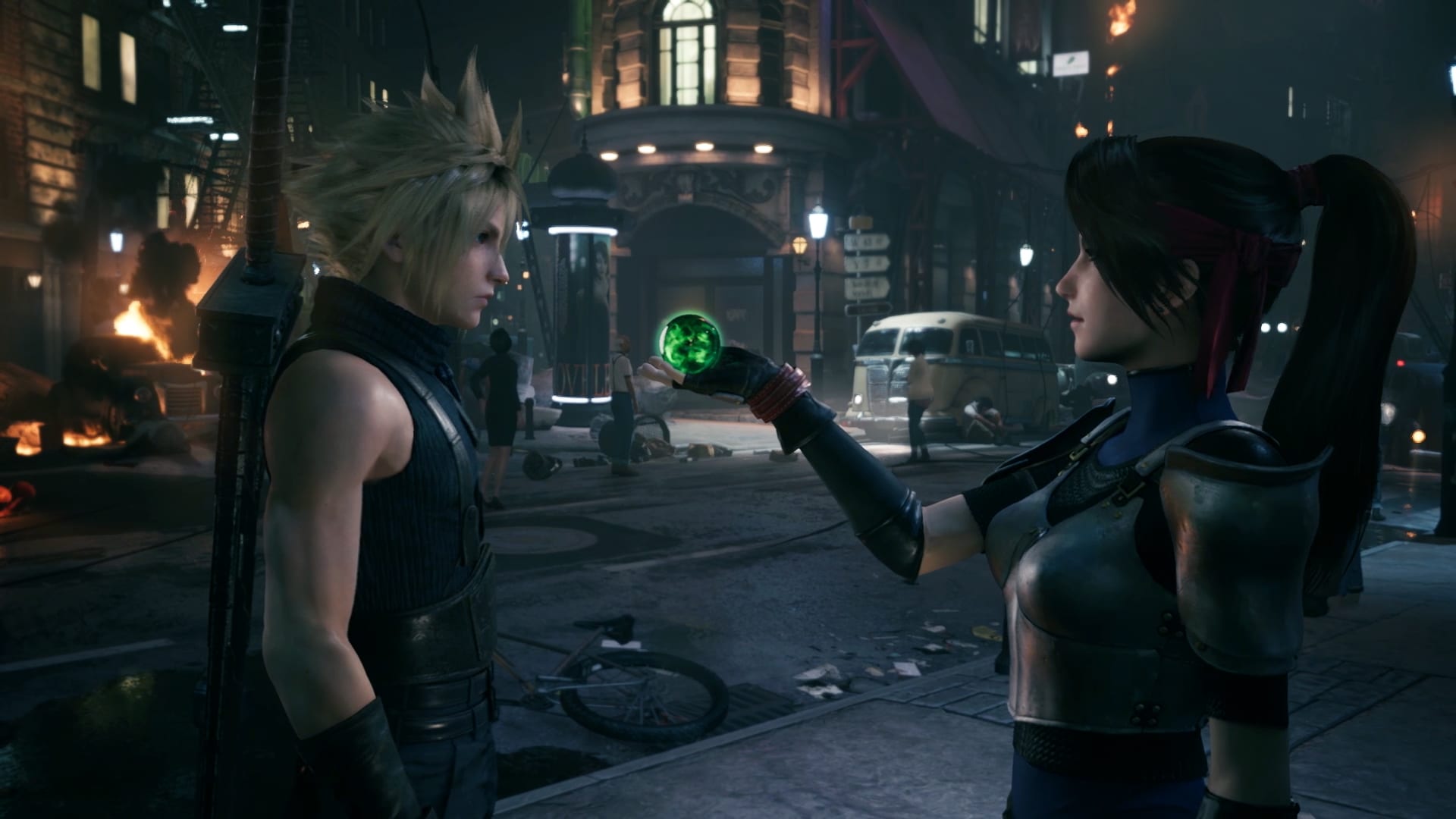
But I particularly savoured every conversation with the sexually desperate Jessie. Her libido becomes especially apparent during stressful situations and she often throws hints at Cloud that fourth base is up for grabs, if he’s interested. Jessie doesn’t feel inferior to the main cast in the slightest and fills the role which often befalls upon a stereotypical male character.
And finally, there’s the flower girl Aerith, even though she frequents the story much later on. She initially comes off as a dum-dum of sorts and even a little annoying. But thirty minutes into Final Fantasy VII Remake and conversations with her turned into some of the most memorable I’ve experienced in a video game ever. She has charm and wit about her that brings out the best in Cloud and contributes to his growing perspective on humanity.
Perspective is also gained following the group’s first operation. When civilians suffer because of their actions, questions arise whether or not what they’re doing is actually for the good. Shinra toys with and meets Avalanche with heavy opposition: armed troopers, flying drone-like security bots, huge mechas that will slam you into the ground with but a single punch. And that brings us to Final Fantasy VII Remake’s combat, which is a substantial improvement over its predecessor.
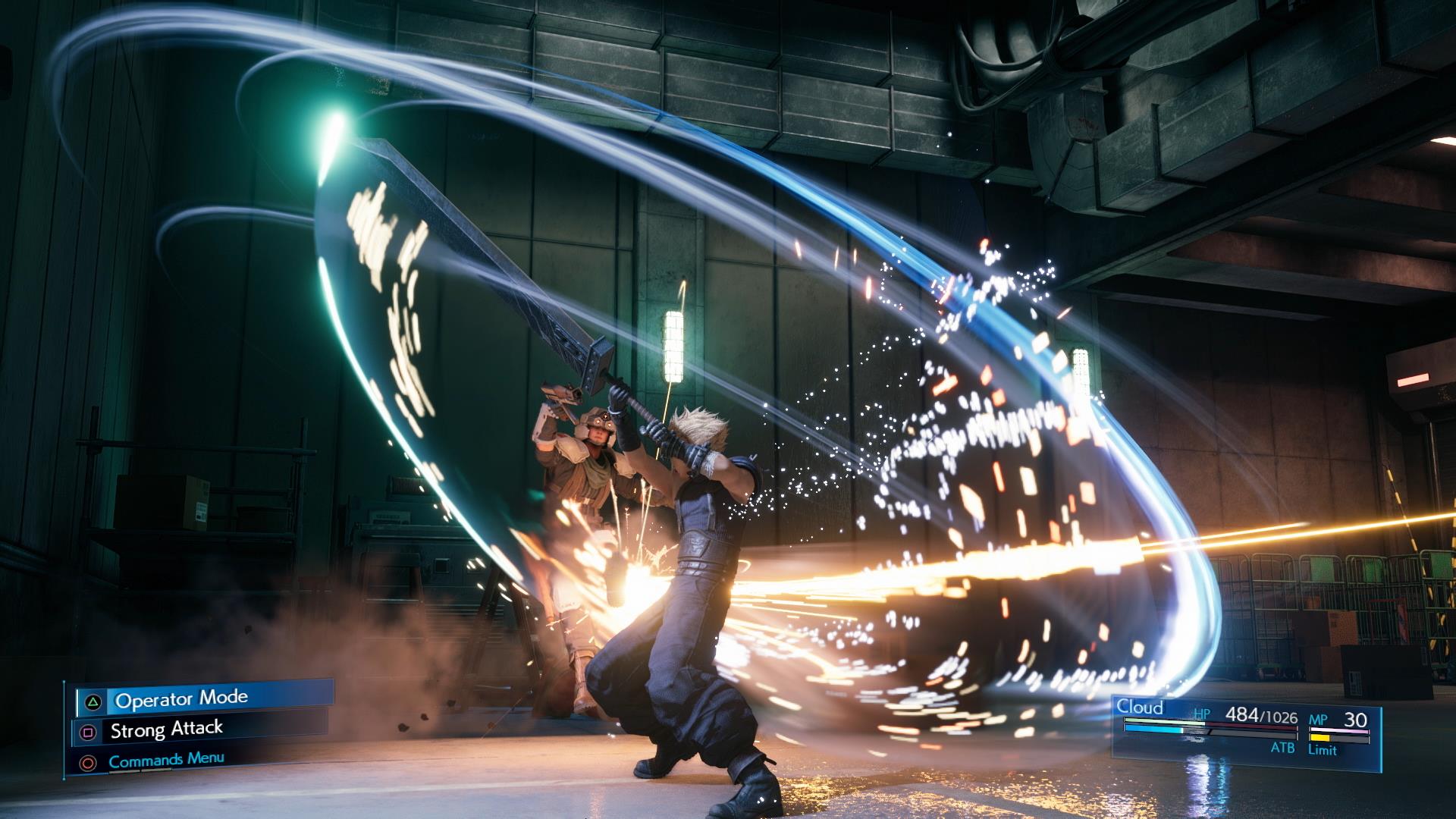
During battles, your party contains up to three active characters which you can switch between seamlessly. And you’ll want to do this because each of them has a set of unique abilities for specific instances. Cloud wields a huge Buster Sword, capable of dealing slow but heavy-hitting attacks. He can also switch from a regular battle stance into a powerful Punisher Mode which decreases his movement and attack speed in favour of increased power.
And while you control one character, the other two fight on their own initiative. With his minigun, Barret expertly deals with ranged enemies, particularly flying drones. And his charged up special attack often destroys security bots in a single shot. Tifa uses nothing but her bare fists to fight foes, but her attacks are faster than anyone else’s. Couple that with her Unbridled Strength ability, which further increases her attack speed and strength, and you’ve got yourself a keeper.
As they perform regular attacks, guard and evade incoming blows, characters charge up their ATB gauge. And only once a segment of the ATB gauge has filled, the said character can perform a special ability or cast a spell. Which means you can’t just endlessly spam a single powerful attack. An exception to this are Limit Breaks, powerful and visually spectacular finishers unique to each character which charge up as a separate gauge.
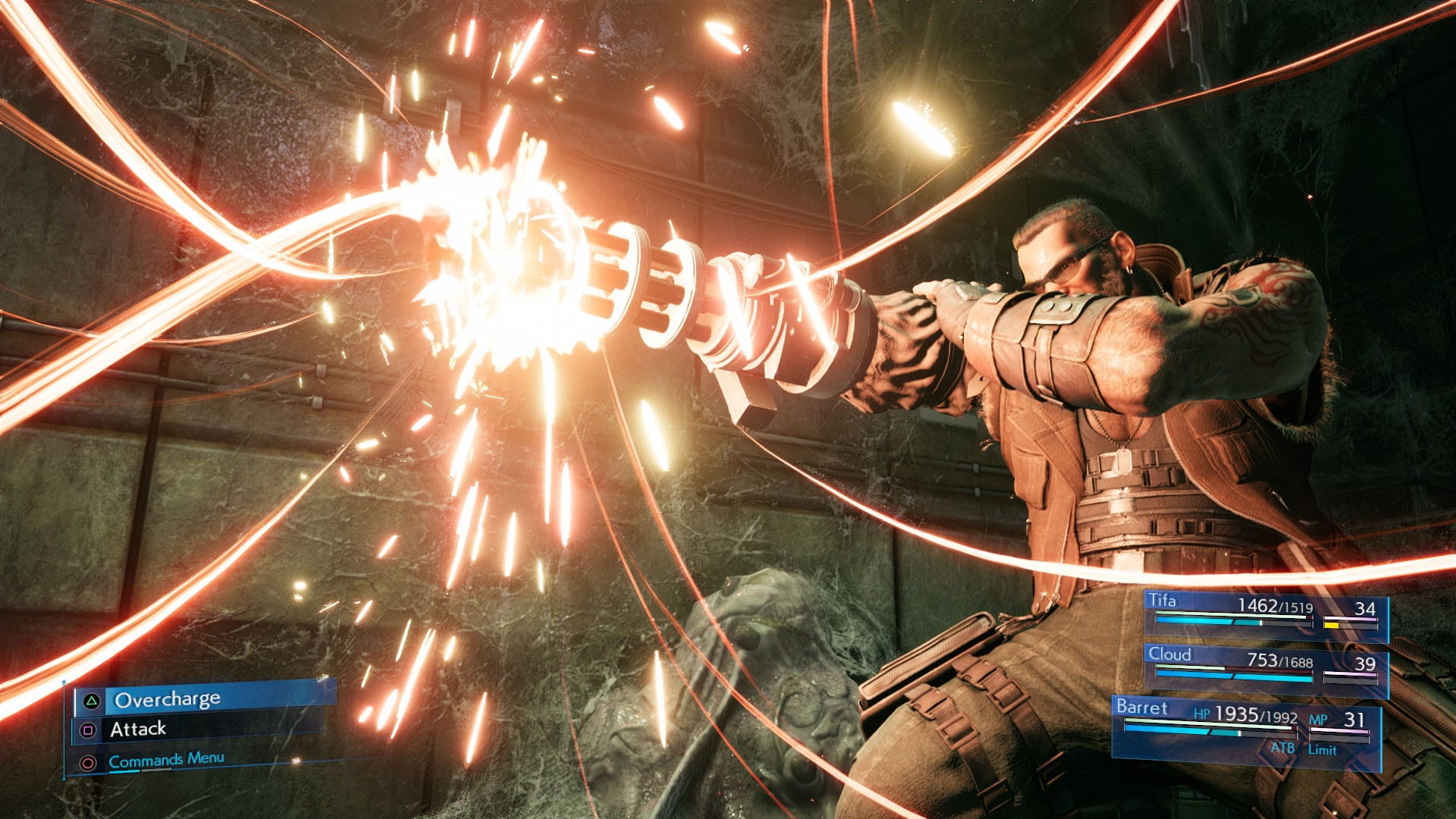
What I found odd is that using items also consumes the ATB gauge. Generally, items are a fail-safe method for when you can’t cast a healing spell or your magic reserves are depleted. But in Final Fantasy VII Remake, your character must still accumulate his or her ATB before using a healing or resuscitating item. Even so, with this many options at your disposal, it’s likely that you’ll breeze through most regular combat instances, but boss battles will require careful planning and usage of all available resources.
One mission involves a lengthy buildup before a boss battle against a giant mech known as an Airbuster. On your way there, you have the opportunity to find keycards which provide access to the mech’s assembly line. Accessing a console allows you to tinker with its components, effectively making the boss weaker. But there’s a catch: there are more consoles than keycards, so it’s up to you to evaluate which abilities are likely to cause you more trouble.
The impact of your decisions becomes evident once you reach the Airbuster and notice how some of its attacks have less of an impact. But even with using all of the available keycards, I barely managed to defeat him, stylishly cutting him apart with Cloud’s limit break.
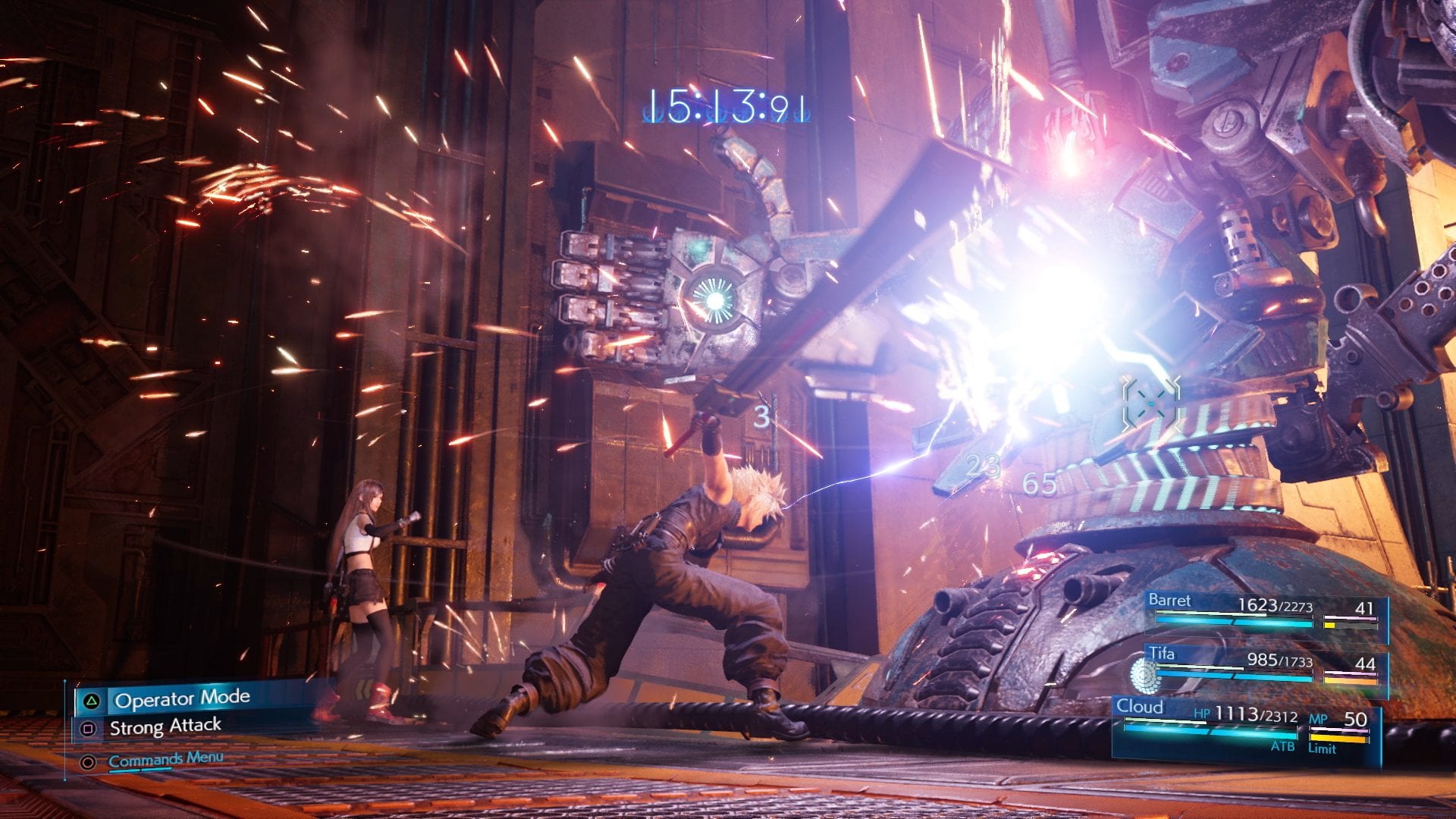
Final Fantasy VII Remake features the familiar Stagger mechanic and combat success relies on it. Attacking any foe with an ability or spell it’s weak to gradually fills the Stagger bar. Once the bar fills, the enemy loses mobility and becomes prone to incoming attacks. It’s especially useful during boss battles and learning enemy weaknesses is crucial to overcoming the odds.
Winning battles awards characters with experience points which allows them to level up and accumulate valuable SP. While characters do develop stats based on their level, most of their power comes from the equipped weapon. Like characters, every weapon has a unique ability.
For example, Cloud’s Iron Blade has a Triple Strike ability which allows him to quickly teleport between three enemies and hit them in rapid succession. Barret can eventually switch his already powerful minigun to a light machine gun or a heavy cannon. And Tifa can equip different gloves. Choosing the right weapon for the job, however, is not just based on stats.
Some weapons may seem weaker on paper, but that’s where the extensive upgrade system comes into play. Using accumulated SP, which is separate for each weapon, you can upgrade that weapon’s stats, like attack power and speed, or provide it with new properties. Moreover, every weapon, ability and spell becomes stronger the more you use it.
And speaking of spells. Unlike in some other entries in the series, characters can’t simply learn a spell. These abilities come from slotting specific Materia into your equipment. Battling monsters, exploring out in the field you’ll find crystals of different colors. Some of them improve general stats as well, but inserting a fire Materia, for instance, allows you to cast the Fire spell which is exceptionally useful against ice-based enemies. Upgrading it changes the spell to its higher tier counterparts — Fira and Firaga — greatly increasing the spell’s efficiency.
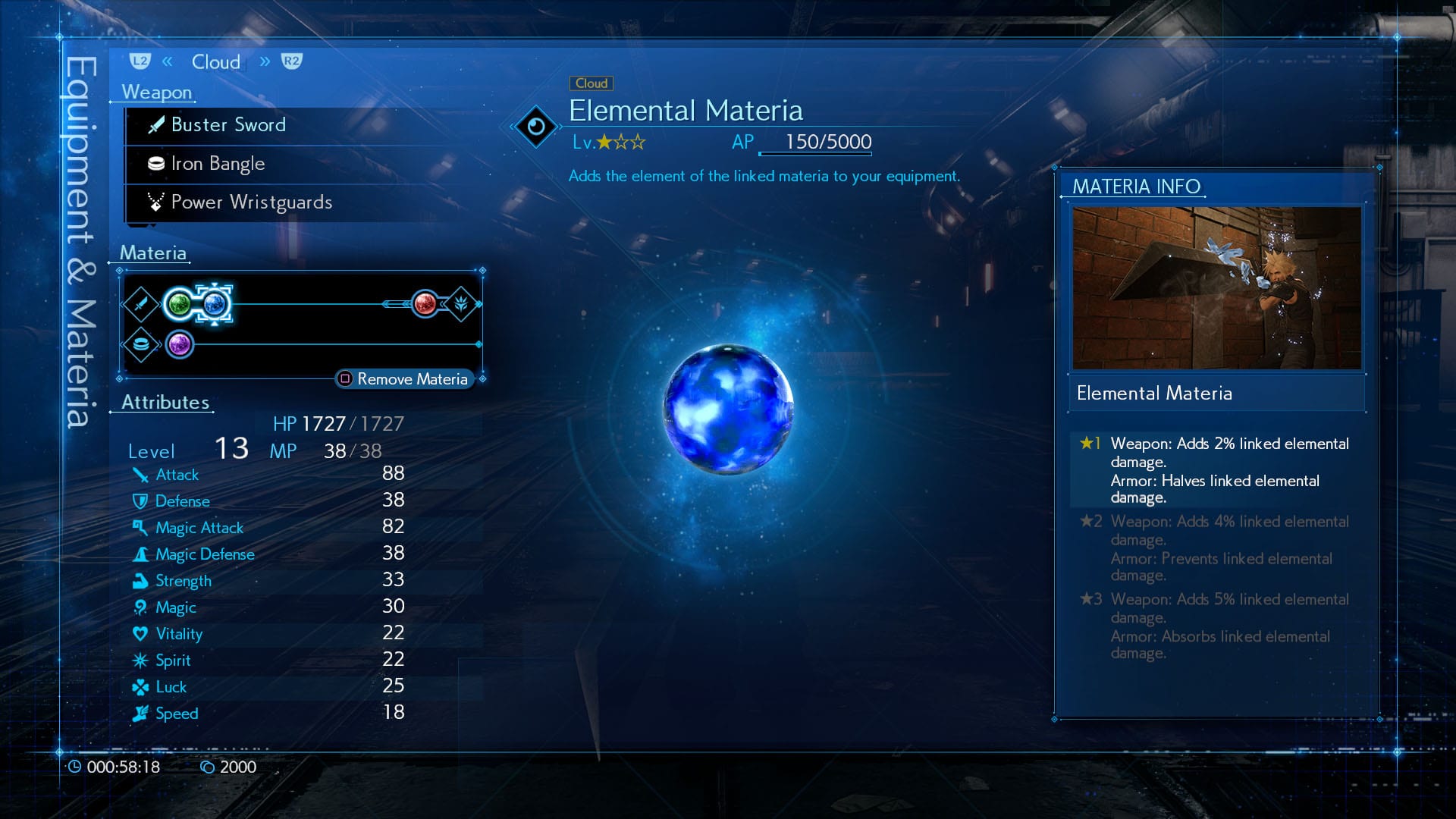
Weapons with more Materia slots often outrank those with better stats and some Materia slots are linked. Let’s assume Cloud’s sword is fitted with a Blizzard Materia. If the slots are linked and you add an Elemental Materia alongside the Blizzard one, suddenly Cloud can not only cast the spell, but his equipped sword becomes imbued with a percentage of that elemental power.
Is Tifa’s visual attire not fiery enough for you? No problem. Link her Fire Materia with another and each of her punches will deliver a blazing attack. Combine a Thunder Materia into Barret’s gun and every bullet will be electrified, making short work of mechanical enemies. Contrarily, if inserted into armour, that same combination of Materia decreases damage taken from that element. And with maximum proficiency, the element is absorbed, healing the character.
In addition to regular Materia, there’s also a special Summon Materia. Sometimes, if the battle isn’t going in your favour, and assuming they are equipped with a Summon Materia, the active character’s summon bar will begin to fill. Once filled, the character can summon a powerful being to their aid which will fight for them. They don’t have a health or magic bar and leave battle once the summon bar has emptied. And for instance, the horned beast Ifrit will leave the area with a blazingly bright Hellfire, dealing heavy fire damage to every enemy on the screen.
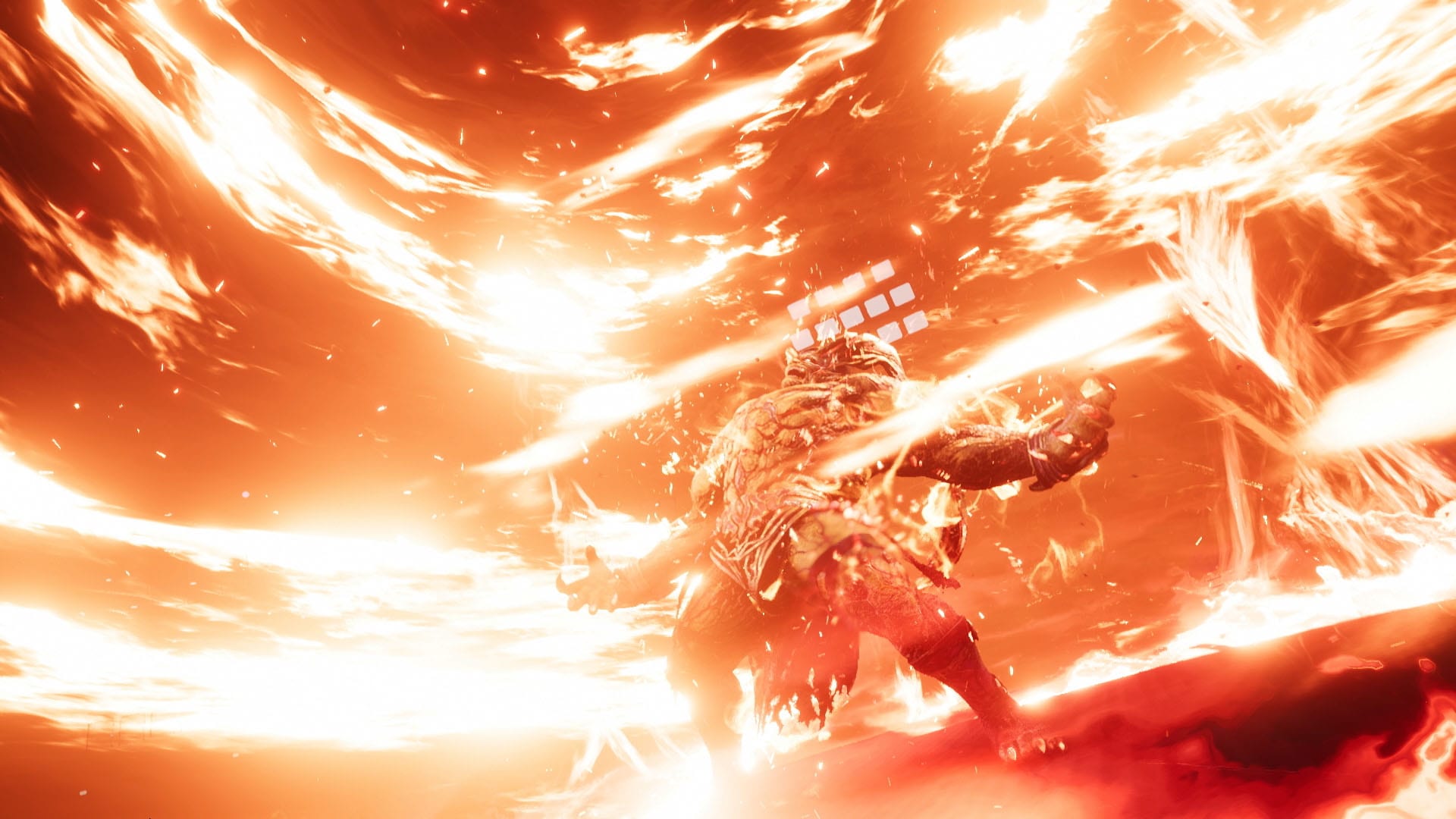
Carefully considering your Materia allocation and exploiting the Stagger mechanic make otherwise regular battles more demanding and interactive. And that’s one thing I missed in Final Fantasy XV: simply using regular attacks was enough, requiring no strategy or planning most of the time. Final Fantasy VII Remake changes that. Play it smart, use the right Materia at the right time and enjoy the payoff. It’s not just fun, it’s often mandatory for success in battle.
And the same applies to decisions made during combat. Simply attacking without consideration won’t amount to any good. It’s important to read enemy attacks, block and evade if your character is being targeted by a laser tracking system. Neglecting defense will more often than not lead to the character falling in battle and, ultimately, a game over screen.
Outside of combat, you can only control Cloud, giving you a firsthand perspective on his development as a person. But other characters will frequently join him on his ventures. During exploration, there’s also more time to appreciate the game’s stunning visuals.
Suffice to say, Final Fantasy VII Remake looks incredible, though character models of some NPC’s lack the same kind of detail as the main cast. But that’s to be expected from a game of this size and it doesn’t take away from the overall quality. Cloud’s Buster Sword is covered in scratches, giving it a worn and rugged look and its blade dynamically reflects light depending on the viewing angle. Exploring the Slums, you’ll come across loot, fairly entertaining mini games like darts, and sidequests, with the city of Midgar floating above like a steel island.
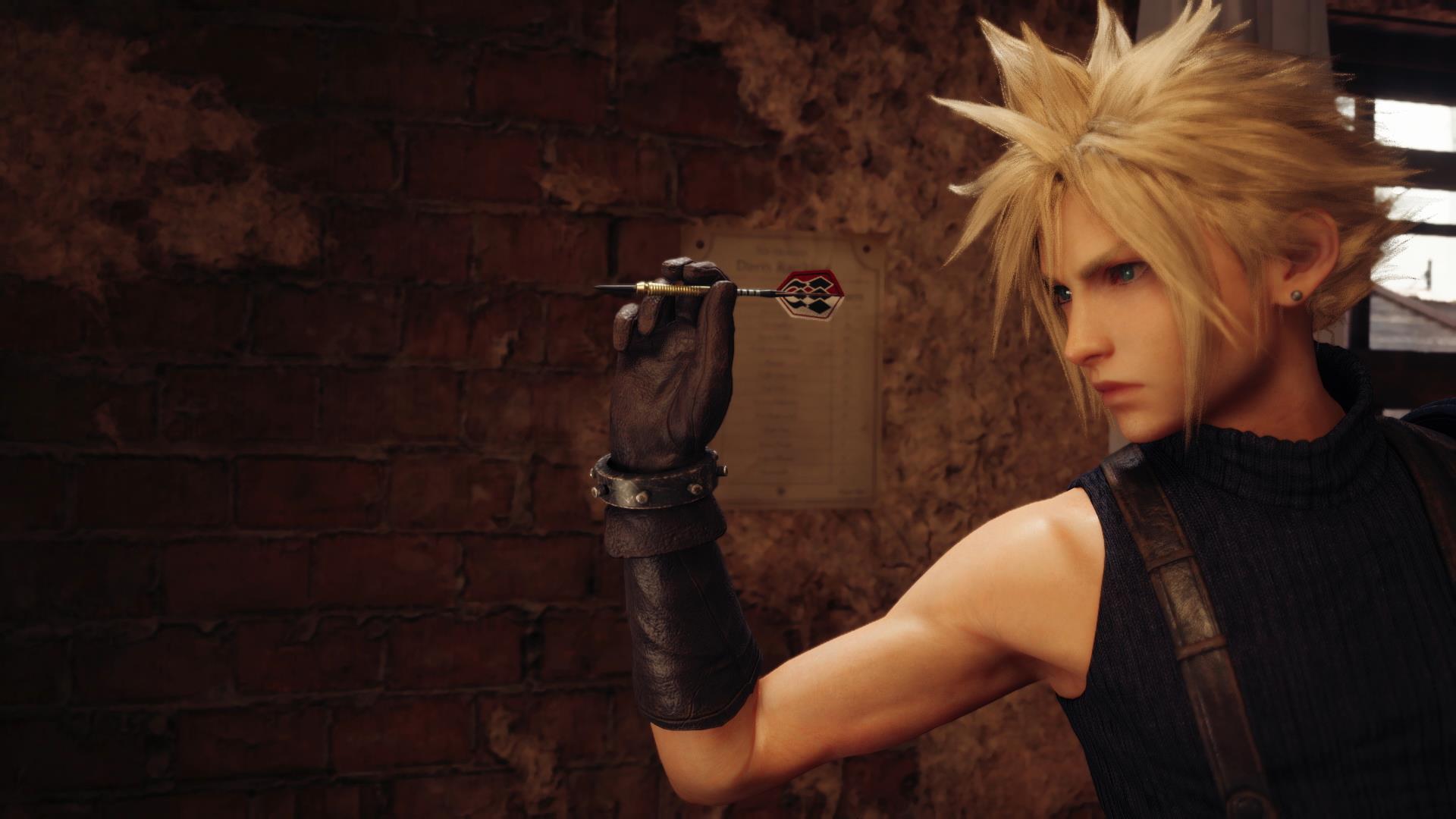
Numerous sidequests discovered in the slums are along the lines of “find this and bring it to me” or “find this enemy and kill it”. Most of them are not particularly original or entertaining, but they accomplish the job of temporarily distracting you from the main plot, as well as occasionally challenging your party. I loved the challenge that some of the tougher sidequests provided as it forced me to go back into the inventory and experiment with different combinations of weapons and Materia. My main gripe with these quests was in how they’re structured.
One of them involved going back to a factory that I had just explored. Within that factory was a locked door with no key in sight. Now that I accepted a new sidequest, there’s suddenly a random box containing the key to that door. And who would’ve guessed, that random box is in the furthest room from the entrance, making you retrace your steps, fighting the same enemies along the way. When undertaking quests, your target is almost always in the furthest spot possible. It’s an old and tired trick for artificially increasing the game’s length.
Without a doubt, Final Fantasy VII Remake does have its shortcomings. It’s a fairly linear experience, especially early on in the story. Going left or right often doesn’t matter as you’ll end up in the same spot. Sidequests lack originality and many of them feel like they’re just tacked on to extend the game’s comparatively short length.
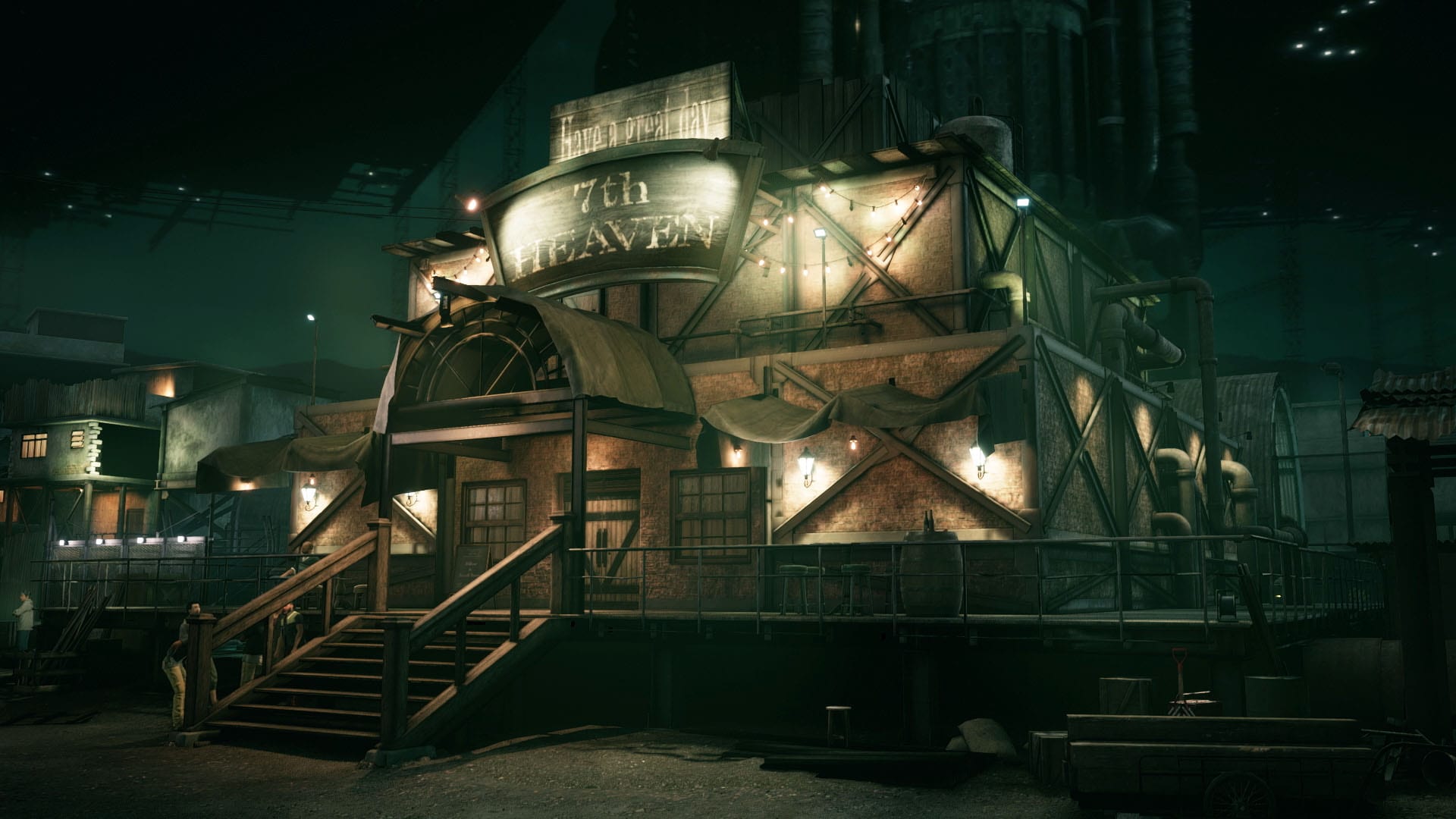
But minor gripes aside, Final Fantasy VII Remake is exceptional. I loved every character in the main cast and the dynamic, unpredictable personas of each. Especially Cloud’s transformation from a cold-hearted mercenary into a trustworthy and empathetic member of Avalanche.
A significant improvement from Final Fantasy XV, the combat system also took me by complete surprise. Finding and upgrading new equipment and Materia feels rewarding in more ways than one. Failing a challenging battle and then fine-tuning your party to counter the foe makes every decision surprisingly meaningful. And I had immense fun experimenting with these mechanics.
Every music track sounds like it’s custom-picked for specific situations with great diligence. And sometimes, Barret will hum Victory Fanfare in his deep gruff voice after winning a battle. Final Fantasy VII Remake is quite possibly the best cyberpunk experience that you’ll have this year, at least until the eventual release of Cyberpunk 2077 in September.

